#Pakistan Air Space
Text
Despite attempts by President Vladimir Putin and Russia's state-controlled media to pin the blame for Friday's deadly Moscow theatre attack on Ukraine, more details are emerging about the jihadist group IS-K that has claimed it was behind it.
Who or what is IS-K?
IS-K is an abbreviation of Islamic State-Khorasan - a regional affiliate of the Islamic State group, which has been proscribed as a terror organisation by governments across the world.
It is focused on Afghanistan, Iran and Pakistan and into Central Asia.
The group has given itself the name Khorasan as that was part of an historic Islamic caliphate spanning that region.
IS-K has been around for nine years but in recent months it has emerged as the most dangerous branch of the Islamic State group, with a long reach and a reputation for extreme brutality and cruelty.
Along with what is left of the group's wider leadership in Syria and Iraq, IS-K aspires to a pan-national Islamic caliphate ruled through an ultra-strict interpretation of Sharia, Islamic law.
In Afghanistan it is waging a sporadic but still deadly insurgency against the country's rulers, the Taliban, who it opposes on ideological grounds.
Has IS-K carried out attacks before?
It targeted the chaotic evacuation from Kabul airport in 2021 with a suicide bomb, killing 170 Afghans and 13 US servicemen.
The following year it targeted the Russian embassy in Kabul, killing at least six people and injuring others.
The group has carried out indiscriminate attacks on a maternity ward, bus stations and policemen.
In January this year, IS-K carried out a double bombing of a shrine in Kerman, Iran, killing nearly 100 Iranians.
In Russia it has carried out numerous small-scale attacks, the most recent being in 2020 - and already this year the FSB, Russia's internal security service, says it has stopped several terror plots.
Who were the Moscow attackers?
According to Russian state media the four men captured and charged are all Tajiks from the Central Asian republic of Tajikistan, which used to be part of the Soviet Union.
It is obvious from their battered and bruised appearance in court that they have been especially harshly interrogated to the point of torture.
The problem with that is according to international norms, their confessions will be worthless - people will say anything to make the pain stop, including confessing to a narrative that is simply untrue.
Reports have emerged that one of the men was seen carrying out surveillance of the venue in early March, around the time the US warned Russia there was an imminent threat of a terrorist attack on a public space - a warning the Kremlin dismissed at the time as "propaganda".
Another report says at least two of the attackers arrived in Russia recently, implying that this was a "hit team" sent by IS-K, rather than a sleeper cell of residents.
Why did they target Russia?
There are several reasons.
IS-K consider most of the world to be their enemies. Russia is high up on their list, along with the US, Europe, Israel, Jews, Christians, Shia Muslims, the Taliban and all rulers of Muslim-majority states, who they consider to be "apostates".
Islamic State's hostility to Russia goes back to the Chechen wars in the 1990s and early 2000s, when Moscow's forces devastated the Chechen capital Grozny.
More recently, Russia entered the Syrian civil war on the side of its ally, President Bashar al-Assad, and the Russian air force has carried out countless bombings of rebel and civilian positions, killing large numbers of Islamic State group and Al-Qaeda-linked fighters.
In Afghanistan, IS-K view Russia as being an ally of the Taliban, which is why they attacked the Russian embassy in Kabul in 2022.
They also bear a grudge for the 10 years of brutal Soviet occupation of that country from 1979-89.
Then there is the situation inside Russia itself.
Russia is viewed by IS-K as very much a Christian country and their video posted after the Moscow attack talks about killing Christians.
Tajik and other Central Asian migrant workers are sometimes subject to a degree of harassment and suspicion by the FSB as it seeks to head off terrorist attacks.
Finally, Russia - a nation currently distracted by its full-scale war with its neighbour Ukraine - may simply have been a convenient target of opportunity for IS-K, a place where weapons were available and their enemy's guard was down.
What do we still not know about the Moscow attack?
There remain a number of unanswered questions about this whole episode.
For example, why were the attackers able to wander at will for nearly an hour around the Crocus Hall with absolutely no apparent sense of urgency?
In a country where the police and special services, notably the FSB, are omnipresent, these gunmen behaved as if they knew they were not going to be interrupted by a police SWAT team.
Then there are the weapons - not just handguns but powerful, modern automatic assault rifles. How were they able to acquire these and smuggle them undetected into the venue?
Their swift capture is also surprising.
Unlike many jihadist gunmen on a raid like this, these men were not wearing suicide vests or belts, in the manner of those who prefer death to capture.
And yet, it did not take long for the Russian authorities - the same Russian authorities who failed to stop the worst terror plot in 20 years unfolding beneath their noses - to round up the suspects and put them on trial.
All this is prompting some analysts to speculate about some sort of so-called "inside job" by the Kremlin, or a "false flag operation" to garner popular support for the war on Ukraine.
However, there is no hard evidence to support that theory and US intelligence has confirmed that in their view, it was Islamic State behind this hideous attack.
5 notes
·
View notes
Text
Calling some US actions after 9/11 “mistakes” is the height of imperial arrogance. During the Bush administration and beyond, inarguably the most destructive US presidency in the 21st century, there was a worldwide torture campaign, the creation and expansion of the detention centre in Guantanamo Bay, the illegal invasion of Iraq, the use of black sites for extraordinary rendition and the death of nearly five million people, according to Brown University’s Cost of War Project.
Today, Israel is also filled with anger and vengeance and does not care one iota about the death of Palestinian civilians. Many in the Netanyahu-led government have expressed genocidal intent towards the entire Palestinian population. Most in the Israeli military and public are celebrating the physical abuse of Palestinians. Amid an atmosphere that is remarkably similar to the US after 9/11, the Israeli “war on terror” is taking shape.
With resounding approval from the general public, the Israeli army has undertaken systematic carpet bombing of the Gaza Strip, dropping in a month more than 25,000 tonnes of explosives, the equivalent of two nuclear bombs. The bombardment of the small enclave mirrors the US air campaigns that used an extraordinary amount of ordnance on Iraq and Afghanistan over two decades, leaving behind immense devastation.
this is the closest i've seen to anyone else really pointing out the links between post-911 america and current israel.
why is there not the same outrage, the same condemnation, of the usa that there is of israel? from my own personal experiences: because it is not safe for us, citizens in supposed allied countries of the usa, it is not safe for us to condemn the usa. it is still not safe for us to condemn the usa's "war on terror", a war that is still happening, that hasn't ended for over 20 years. if "foreigners" condemn america, we become terrorists, so there is only space left for americans to condem america, and they do not care.
i saw with my own eyes in real time the mass support from americans for the war on terror, the rage, the thirst for revenge, the only space allowed for criticism among your self policing was the "anti-war" stance that bush was after the wrong kinds of foreigners. when you were and are told of the children being drone bombed by operators in your local shopping malls, you wail and cry in deflection: "that's the government, not us! we are powerless! we don't even have healthcare!"
do you think the children you are bombing in yemen, somalia, and pakistan have healthcare? do you even know you're killing them? you have direct bodily access to your politicians, you know where they work, where they live. if you are demanding israeli citizens force their government to stop killing palestine, what have you done in the last 20 years? what can you bring yourself to be bothered to do, if the lives your government are crushing are just dumb cringe foreigners that don't even use fahrenheit?
better to just be outraged at israel for copying your war crimes homework, that's safe.
i don't even know if i can safely tell you what happens to "allied" citizens that dare stand too tall against the war america forced us into, because i shouldn't know.
americans are the only ones that can stop their government.
americans are the only ones that can stop my government, too.
#i am so fucking sick of this all#i am sick of the 911 jokes#i am sick of the yanks that wanted to nuke the whole world in november 2016#i am sick of my country fighting americas wars because if we dont we are in the crosshairs#i am sick of what your soldiers do to the women and children in our countries#and i am sick of you all thinking you are the biggest victims#turning notifications off instantly
8 notes
·
View notes
Text
What’s the Deal with Kush? The Origin of a Classic Strain

Before we get into the article about what the deal with Kush is, here is an actual deal on Kush, delivered to your door in Canada. Rad.
Everyone knows Kush means quality. There’s a built in expectation that the weed should slap if it bears the classic name. It’s also a well known parent to many classic varietals. Before the names O.G. Kush, Chem Dog, and Cookies became household among growers worldwide, there existed a time when the Kush strain remained relatively obscure. Let’s look into the intriguing history of the Kush strain and its transformation into one of the most renowned medical marijuana varieties globally.
Just like any other modern cannabis seed strain, landraces played a pivotal role in establishing the fundamental genetic foundations of everything we smoke today with the Kush name on it. Numerous countries harbour a diverse array of marijuana landraces, thriving particularly in regions characterized by hot climates and mountainous terrain. In these areas, expansive fields of landrace cannabis plants flourish organically. Owing to the cannabis plant’s inherent robustness, these fields have been subject to countless generations of natural backcrossing over the span of hundreds, if not thousands of years.
Among the most well-known Kush varieties today are Hindu Kush, Master Kush, and Afghan Kush, all originating from these locations as original landraces. Through meticulous backcrossing efforts, breeders sought to unearth the quintessential phenotype for cannabis cultivation. Since its introduction in Amsterdam nearly three decades ago, numerous seed banks now offer a broad spectrum of landraces and hybrids, with many of the original landrace strains still available to enthusiasts.
The Kush cannabis strain found its way to Amsterdam during the late 1970s or early 1980s, carried by intrepid cannabis enthusiasts who ventured through the rugged landscapes of the Himalayas, spanning Pakistan, India, and Afghanistan. They returned with seeds sourced from the Hindu Kush mountain range, nestled between northern Pakistan and Afghanistan. The name “Kush” derives from this region and intriguingly translates to “killer” in ancient Persian.
The aromatic profile, taste, and effects of Kush strains are the key attributes that make them highly sought after both in the context of a coffee shop’s offerings and for growers. The scent of this medical marijuana variety is unmistakable, often likened to the odour of jet fuel and characterized by a pungent, dank, and lemony quality. The potency of the Kush aroma is such that even the tiniest dried bud can fill a room with its distinctive fragrance. When it comes to taste, a well-cultivated Kush strain mirrors its aroma but adds a lingering jet fuel undertone that lingers with every puff, creating a truly unique and memorable experience. Typical of other heavy Indicas, real kush plants stay short with tight internodal spacing, creating dense foliage and buds. The plants finish quickly and produce well, making them a favourite for more modern growers all over the world for decades.
A joint of OG Kush, like I posted above, will transform the surrounding air, saturating it with a dense, rich, and almost viscous quality. A few puffs of this potent strain with its unmistakable jet fuel aroma will promptly initiate a profound shift in your state of mind and body. The initial effects manifest as heavy eyelids and an almost immediate sense of being pleasantly stoned. Energy levels plummet, and motivation wanes, ultimately leading to a state of complete relaxation and tranquility. Notably, the THC content in Kush varieties has consistently been subjected to testing, with results often exceeding the 20% threshold.
Kush strains are renowned for their robust pain-relief properties. Whether smoked or incorporated into edibles, the medicinal impact of Kush is often likened to a nearly narcotic experience. It proves highly effective in addressing a range of conditions, including insomnia, appetite loss, and anxiety. Patients grappling with pain stemming from bone, nerve, or muscle issues also find considerable relief through Kush usage. For those coping with conditions like Multiple Sclerosis, Parkinson’s, and a multitude of other illnesses, medicating with Kush and similar indica strains has proven to be indispensable.
Cancer patients, in particular, derive substantial benefits from Kush, often experiencing relief that surpasses the effectiveness of pharmaceutical resources. Many report improved appetite, better sleep, and the restoration of regular bowel function when incorporating this cannabis strain into their treatment plans.
While sativa strains are typically favoured by patients seeking heightened energy levels and motivation, Kush continues to hold appeal for many due to its potent anti-inflammatory and pain-relieving effects. Recognizing this, numerous breeders, including Spliff Seeds, are now focusing on developing Kush hybrids that aim to preserve its distinctive medicinal potency while mitigating its pronounced couch-locking effect. One such example is Spliff Blue Medi Kush, a strain developed in collaboration with medical marijuana users, tailored to serve precisely this purpose.
If you’re looking for a classic you can’t miss with a well grown Kush strain.
By Meso Potamia, Ganja Guy, for Potsmart
9 notes
·
View notes
Text
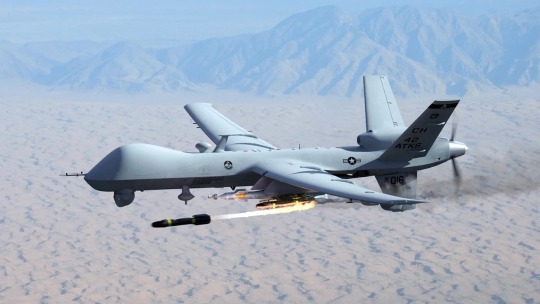
MQ-9s drones chased by Russian fighters eliminate the main leader of the Islamic State in Syria 🇸🇾
Fernando Valduga By Fernando Valduga 10/07/2023 - 08:45 in Military, War Zones
An ISIS leader in eastern Syria, Usamah al-Muhajir, was killed as a result of an attack led by an MQ-9 Reaper drone of the U.S. Central Command on July 7.
The recent news marks the culmination of three consecutive days of tense encounters, with the U.S. military strongly condemning the actions of Russian fighter pilots accused of "shatying" Reaper drones involved in anti-terrorist operations in Syria.
The U.S. Central Command revealed on July 9 that the trio of MQ-9 Reaper drones, which were subjected to "harassment" by Russian fighters over Syria, were the responsible drones themselves ?? for executing an air attack that resulted in the death of a high leader of the Islamic State group.

Throughout Wednesday and Thursday, there were two separate incidents, generating criticism from the U.S. Air Force Center. In addition, on Friday, there were more interactions between Russian fighters and American drones, with the U.S. Air Force Center reporting 18 instances of non-professional Russian aircraft passes, forcing the MQ-9 to take evasive actions to avoid unsafe situations.

"We make it clear that we remain committed to the defeat of ISIS throughout the region," said General Michael "Erik" Kurilla, commander of the U.S. Central Command. "ISIS remains a threat, not only to the region, but far beyond."

"There is no evidence that civilians were killed in this attack and the coalition is evaluating the reports of an injured civilian," CENTCOM said.
Last month, the U.S. Air Forces published their monthly achievements in operations against ISIS. According to the report, there were 30 operations in partnership in Iraq and 7 operations in partnership in Syria. No operation in the U.S. alone took place in any of the countries. In Iraq, 12 ISIS agents were killed and 7 were arrested. In Syria, 1 ISIS agent was killed and 14 were arrested.
Tags: Military AviationMQ-9 ReaperUSAF - United States Air Force / U.S. Air ForceWar Zones - Syria
Sharing
tweet
Fernando Valduga
Fernando Valduga
Aviation photographer and pilot since 1992, has participated in several events and air operations, such as Cruzex, AirVenture, Daytona Airshow and FIDAE. He has works published in specialized aviation magazines in Brazil and abroad. Uses Canon equipment during his photographic work around the world of aviation.
Related news
MILITARY
North Korea warns that it will shoot down U.S. spy planes that violate its airspace
10/07/2023 - 18:57
HELICOPTERS
Sea Lion helicopters start SAR operations in Germany
10/07/2023 - 16:00
MILITARY
Elbit Systems receives contract from Asian country to convert ATR 72 into long-range patrol aircraft
10/07/2023 - 14:00
MILITARY
RUSSIA: After the drones, the US F-16s 'violate' the airspace during the Russia-Syria exercises
10/07/2023 - 13:00
MILITARY
Poland delivers about 12 Mi-24 helicopters to Ukraine
10/07/2023 - 11:00
MILITARY
Iraq negotiates with Pakistan to buy JF-17 Thunder jets
10/07/2023 - 09:00
homeMain PageEditorialsINFORMATIONeventsCooperateSpecialitiesadvertiseabout
Cavok Brazil - Digital Tchê Web Creation
Commercial
Executive
Helicopters
HISTORY
Military
Brazilian Air Force
Space
Specialities
Cavok Brazil - Digital Tchê Web Creation
8 notes
·
View notes
Text
Events 10.29 (after 1950)
1953 – BCPA Flight 304 DC-6 crashes near San Francisco.
1955 – The Soviet battleship Novorossiysk strikes a World War II mine in the harbor at Sevastopol.
1956 – Suez Crisis begins: Israeli forces invade the Sinai Peninsula and push Egyptian forces back toward the Suez Canal.
1957 – Israel's prime minister David Ben-Gurion and five of his ministers are injured when Moshe Dwek throws a grenade into the Knesset.
1960 – An airplane carrying the Cal Poly football team crashes on takeoff in Toledo, Ohio.
1964 – The United Republic of Tanganyika and Zanzibar is renamed to the United Republic of Tanzania.
1964 – Biggest jewel heist; involving the Star of India (gem) in the American Museum of Natural History in New York City by Murph the Surf and gang.
1967 – Montreal's World Fair, Expo 67, closes with over 50 million visitors.
1969 – The first-ever computer-to-computer link is established on ARPANET, the precursor to the Internet.
1972 – The three surviving perpetrators of the Munich massacre are released from prison in exchange for the hostages of the hijacked Lufthansa Flight 615.
1980 – Demonstration flight of a secretly modified C-130 for an Iran hostage crisis rescue attempt ends in a crash landing at Eglin Air Force Base's Duke Field, Florida, leading to the cancellation of Operation Credible Sport.
1985 – Major General Samuel K. Doe is announced as the winner of the first multi-party election in Liberia.
1986 – British Prime Minister Margaret Thatcher opens the last stretch of the M25 motorway.
1991 – The American Galileo spacecraft makes its closest approach to 951 Gaspra, becoming the first probe to visit an asteroid.
1994 – Francisco Martin Duran fires over two dozen shots at the White House; he is later convicted of trying to kill U.S. President Bill Clinton.
1998 – In South Africa, the Truth and Reconciliation Commission presents its report, which condemns both sides for committing atrocities.
1998 – Space Shuttle Discovery blasts off on STS-95 with 77-year-old John Glenn on board, making him the oldest person to go into space at that time.
1998 – ATSC HDTV broadcasting in the United States is inaugurated with the launch of the STS-95 space shuttle mission.
1998 – While en route from Adana to Ankara, a Turkish Airlines flight with a crew of six and 33 passengers is hijacked by a Kurdish militant who orders the pilot to fly to Switzerland. The plane instead lands in Ankara after the pilot tricked the hijacker into thinking that he is landing in the Bulgarian capital of Sofia to refuel.
1998 – Hurricane Mitch, the second deadliest Atlantic hurricane in history, makes landfall in Honduras.
1998 – The Gothenburg discothèque fire in Sweden kills 63 and injures 200.
1999 – A large cyclone devastates Odisha, India.
2002 – A fire destroys a luxurious department store in Ho Chi Minh City, where 1,500 people are shopping. More than 60 people die and over 100 are unaccounted for in the deadliest peacetime disaster in Vietnam.
2004 – The Arabic-language news network Al Jazeera broadcasts an excerpt from a 2004 Osama bin Laden video in which the terrorist leader first admits direct responsibility for the September 11, 2001 attacks and references the 2004 U.S. presidential election.
2005 – Bombings in Delhi, India kill more than 60.
2008 – Delta Air Lines merges with Northwest Airlines, creating the world's largest airline and reducing the number of US legacy carriers to five.
2008 – A pair of deadly earthquakes hits Baluchistan, Pakistan, killing 215.
2012 – Hurricane Sandy hits the east coast of the United States, killing 148 directly and 138 indirectly, while leaving nearly $70 billion in damages and causing major power outages.
2014 – A mud slide; the 2014 Badulla landslide, in south-central Sri Lanka, kills at least 16 people, and leaves hundreds of people missing.
2015 – China announces the end of its one-child policy after 35 years.
2018 – A Boeing 737 MAX plane crashes after taking off from Jakarta, Indonesia killing 189 people on board.
2 notes
·
View notes
Photo







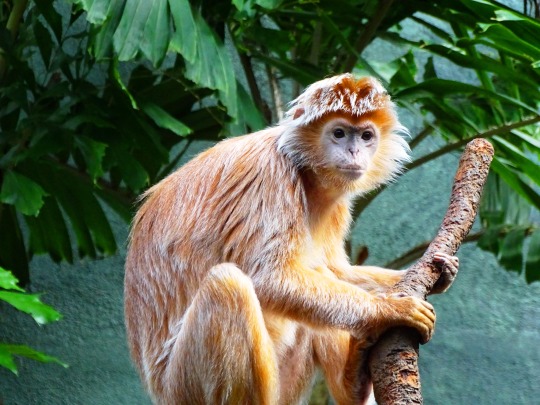


Monkey Day
Spend a day at the zoo with these cheeky creatures, throw a monkey-themed fancy dress party or fundraise to protect these precious primates.
Monkeys are interesting creatures – cute, mischievous, and sometimes downright obnoxious (anyone who disagrees has obviously never had their laundry torn down by a family of primates when it’s hanging to dry). Many species of primates are also endangered, and then there are questions of animal rights and the usage of primates in medical research. That’s why there’s Monkey Day, a day that’s been dedicated to raising awareness about non-human primates.
Learn about Monkey Day
Monkey Day has been created to celebrate monkeys, as well as “all things simian,” which includes lemurs, tarsiers, apes, and other non-human primates. It is a great day when it comes to raising awareness about different types of monkeys and primates around the world, as well as the issues they face and how we can help them.
Environmental activists and animal rights activities are especially vocal and passionate about this date. The same goes for art institutions and visual artists. Supporters and celebrates of this date include the Smithsonian Institution, the Metropolitan Museum of Art, the Louvre Museum, London’s National Portrait Gallery, National Geographic, Greenpeace, and Jane Goodall.
History of Monkey Day
Back in 2000, Casey Sorrow was an art student at Michigan State University, and he ended up writing “Monkey Day” on his friend’s calendar as a prank. But then they actually celebrated the occasion with other art students at MSU, and Sorrow later started collaborating with fellow MSU student on the Fetus-X comic strip, where the holiday was mentioned and popularized. Since then, Monkey Day has been observed internationally as a day to celebrate primates (including monkeys, but also apes, lemurs, and tarsiers).
Sorrow himself still does much to promote the holiday and the cause of primate welfare, and in addition to the Monkey Day website, he also maintains a “Monkeys in the News” blog which discusses primate-related news around the world and comes out with a list of the top ten primate-related news stories from the past year every Monkey Day.
Since Monkey Day was created, it really has gone from strength-to-strength. It is now celebrated in many different corners of the world. This includes Scotland, Turkey, Thailand, Colombia, the United Kingdom, Estonia, Pakistan, India, Germany, and Canada. It has been described by the Washington Post as a day to do the following:
“Learn something about these adorable and highly intelligent primates. Or you could use this day to act like a monkey.”
Monkey Day Timeline
2nd Century AD Claudius Galenus studies monkeys
In the early days of pioneering medicine Galenus (known as Galen) studied monkeys through dissection, noticing their similarities to humans.
1939 Flying monkeys are featured in film Wizard of Oz
In a strange and frightening portion of the plot, monkeys with wings act as minions released by the Wicked Witch of the West to scare off Dorothy and her friends.
1941 Curious George makes debut in books
As monkeys begin appearing in films and books, one of the most endearing monkeys will last in popularity for at least 80 years–Curious George. Although there are only 7 books in the original series by H. A. Ray, the character lives on through an animated television show, videos and even a 2006 feature film.
1959 First monkey in space
A squirrel monkey, Miss Baker, and a rhesus macaque, Able, were the first monkeys who made a successful launch and return to space. They were sent by the United States Air Force on a Jupiter rocket.
2000 Monkey Day begins
As a little joke, Casey Sorrow, a Michigan State University art student, wrote “Monkey Day” on a friend’s calendar just to be silly. Then, in more silliness, they decided to go ahead and celebrate the day with other art students. Later, Casey Sorrow became the co-creator of the weekly Fetus-X comic strip, which was used to promote the day.
How to celebrate Monkey Day
You could simply dress up in a monkey costume and play the part, because there are some people who do just that for Monkey Day and even hold competitions for it. Or you could spend the day at the zoo, because many zoos around the world do hold special celebrations for Monkey Day. Some of these events focus on educational events about monkeys, while others do things like auction off artwork created by chimps and performing intelligence tests on primates.
Even if a local zoo in your area is not hosting an event on this date, we would definitely recommend taking a trip to your nearby zoo and spending some time with the animals. Make sure you do take a look at their calendar beforehand, as zoos all around the world have special activities and talks going on. For example, at Australia’s National Zoo & Aquarium, they hold a number of educational talks and activities that are designed to raise money for endangered species, such as Cotton-top Tamarins in Columbia, as well as increasing awareness.
In Scotland, at the famous Edinburgh Zoo, they raise awareness about the different dangers that primates face by using monkey storytelling. Monkey Day events are also held at The Faruk Yalçın Zoo and Botanical Park in Darıca, Turkey to raise awareness. In India, the Indira Gandhi Zoological Park holds a number of different programs so that children can become educated about issues facing wildlife and so that people are encouraged to adopt monkeys. The list doesn’t end there either. In Pakistan, the Lahore Zoo really goes the extra mile. They hold educational events and art competitions about monkeys, including performances to highlight the threats they face, poetry readings about monkeys, and much more.
Even if you don’t have a monkey at your house, you might consider throwing a monkey day party, inviting all of your friends over (keep in mind that humans are in fact primates too, even without gorilla costumes), and common activities at such celebrations involve films such as King Kong, Planet of the Apes, and Lady Iron Monkey, as well as monkey-themed music (The Monkees, anyone?).
Often, celebrations involve fundraising for primate-related causes and charities, and many organizations around the world dedicated to primates hold Monkey Day events of various sorts. So when Monkey Day comes around, get out there and do it proper, by monkeying around!
Finally, another way that you can celebrate Monkey Day is by watching a film based on this primate! There are so many different types of monkey films. Of course, the Planet of the Apes series of films is the most well-known, but there are many others. Disney’s Monkey Kingdom comes highly recommended. Other famous monkeys on our screens include the Chain-Smoking Capuchin in The Hangover Part II, Clyde in Every Which Way But Loose, Cheeta in Tarzan the Ape Man, George in Curious George, Joe in Mighty Joe Young, and King Louie in The Jungle Book.
Source
#Gelada Baboon#Wolf's mona monkey#2019#Bronx Zoo#New York City#my favorite zoo#indoors#original photography#animal#travel#vacation#tourist attraction#landmark#Mandrillus sphinx#outdoors#ebony lutung#Western lowland gorilla#Black-and-white colobus#Monkey Day#19 December#InternationalMonkeyDay#I really love the first pic
6 notes
·
View notes
Text
I am Death, the Destroyer of Worlds, bringing death to all living things: Chronicles of a prehistoric nuclear apocalypse
A few people doubt that at the turn of the XXV-XXX millennia BC, a war with the use of nuclear weapons raged on our planet. This is confirmed both in the ancient Indian texts "Ramayana" and "Mahabharata", and scars in the form of funnels from explosions of nuclear warheads on the surface of the Earth.

There are more than a hundred craters with a diameter of 2 to 3 kilometers, whose age is 25-35 thousand years, as well as two huge craters, the age of which also fits into this time interval.

The first is located in South America and its diameter is 40 kilometers, the second is found in South Africa with a diameter of 120 kilometers. One of the largest battles of that war with the use of nuclear weapons took place in the territories of today's India and Pakistan.

Then this was part of the Rama empire. As a result of archaeological excavations at the site of the capital of the vanished empire, Mohenjo-Daro, human skeletons were found with traces of radioactive damage and sand baked to glass, exactly like that found in modern nuclear test sites.

There are two versions of the nuclear apocalypse that happened in the Earth's past. In the first case, the Asuras and reptilians, aliens from outer space, fought. Asuras lost the war and tried to hide in their underground shelters.

However, earthquakes and floods caused by a nuclear cataclysm on a planetary scale destroyed their underground cities and forced them to rise to the surface again. There, the invaders who colonized the Earth were already waiting for them, and the Asura race practically ceased to exist.
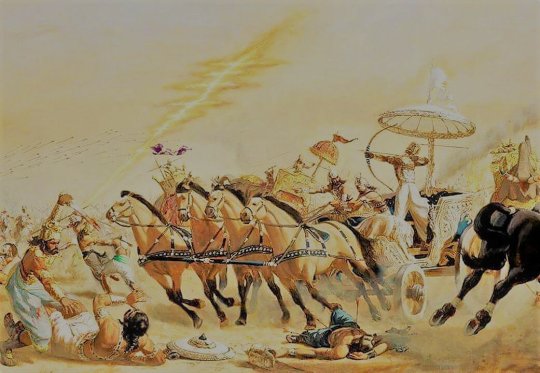
In the second case, the conflict allegedly took place between the Atlanteans (Aswins) and the Lemurians, representatives of the Rama empire. As a result of nuclear bombardments by the Atlanteans, which they carried out from their aircraft - vimanas, the Rama empire was almost completely wiped off the face of the Earth.

This is how it is described in the Mahabharata epic:
“In all its splendor, red-hot columns of smoke rose and flames brighter than ten thousand suns ... the corpses burned beyond recognition. The survivors lost their nails and hair. The birds are gray. All food became unusable. The soldiers who escaped the fire rushed into the water to wash away the ashes ... ".

On the face are all signs of radiation sickness in survivors and radiation contamination of animals and food. Given that the surviving soldiers rushed to wash off the radioactive ash, the Lemurians were well aware of the concept of "radiation". Also, do not forget that traces of nuclear bombings were found on different continents of our planet.

This is explained quite simply. The Lemurians also had their own air fleet, consisting of vimanas. It can also be assumed that they also possessed nuclear weapons and nothing could prevent them from using it on the territory of the Atlantean empire as a weapon of retaliation.
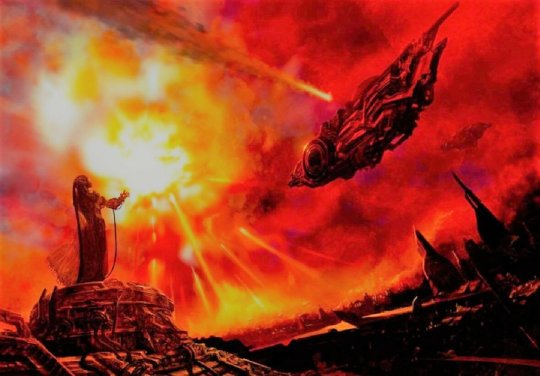
And what happened in the end? According to the ancient texts, after the completion of the bombing, the whole planet was raining radioactive rain for three days and three nights. This event is mentioned by almost all the peoples of the world, including in the legends of the Maya, the people of the Far North and the Australian Aborigines. And a little later, the Great Flood happened. The earth, as best it could, washes away traces of radiation contamination.

It is possible to treat this kind of information in different ways, but there are definitely all the prerequisites for the fact that the Earth was already once subjected to the destructive effects of nuclear weapons.

And it seems that it is no longer so important who and with whom then fought, given that at present we do not see either Asuras, or Reptilians, or Atlanteans with Lemurians on the streets of our cities. Apparently, in the end, it is impossible to win a nuclear war.
Read the full article
3 notes
·
View notes
Photo

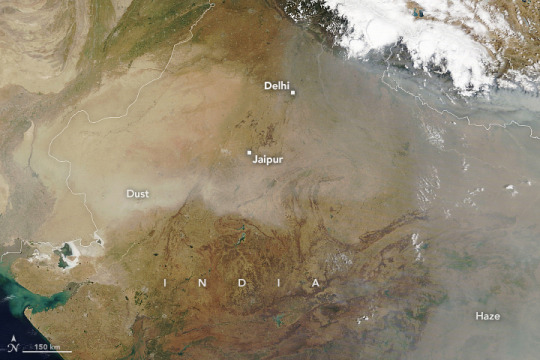
How Dust Affects the World’s Health Doctors and public health experts agree that breathing fine particulate matter (PM2.5) can be harmful to human health. The airborne particles—thirty times smaller than the width of human hair—can pass easily into the lungs and bloodstream, where they can increase a person’s risk of dying from heart disease, stroke, lung cancer, chronic obstructive pulmonary disease, and lower respiratory infections. However, current estimates of the total number of premature deaths linked to PM2.5 range widely, from 3 to 9 million people each year. And there has long been uncertainty about the proportion of these deaths that are due to naturally occurring windblown dust versus human-caused (or anthropogenic) pollution, which comes from factories, transportation, power plants, cookstoves, crop fires, and other sources. Research led by a team of atmospheric scientists based at NASA’s Goddard Space Flight Center indicates that the health burden associated with PM2.5 is somewhat lower than previous estimates suggest—and sheds light on the role of dust. The researchers—including Hongbin Yu and Alexander Yang—calculated the global health effects of PM2.5 by analyzing exposure over an extended period of time using a NASA atmospheric modeling system integrated with medical data from the Univeristy of Washington’s Global Burden of Disease Study. The NASA team’s conclusion: exposure to PM2.5 likely contributed to 2.89 million premature deaths in 2019—1.19 million from heart disease, 1.01 million from stroke, 287,000 from COPD, 230,000 from lower respiratory infection, and 166,000 from lung cancer. According to their estimates, roughly 43 percent of those deaths occurred in China and 23 percent in India—two of the most populous and polluted countries in the world. Other countries with significant exposure to PM2.5 and large numbers of premature deaths included Pakistan, Bangladesh, and Nigeria—though none of these countries accounted for more than three percent of the total deaths linked to PM2.5. The analysis linked 22 percent of the premature deaths associated with PM2.5 to dust—much of this in a “dust belt” that spans from West Africa to East Asia. “In both northern China and northern India, you have huge urban populations living downwind of major dust sources,” explained Yu. “You also have this in West Africa and the Middle East to some degree, especially in Nigeria and Egypt.” The top satellite image above shows a wall of dust from the Gobi Desert approaching northeastern China and the Beijing metropolitan area on March 10, 2023. The image below shows dust from the Thar Desert blowing east over the densely populated Indo-Gangetic Plain and mixing with smoke and haze from crop fires and urban pollution on April 7, 2021. Both images were acquired by the Moderate Resolution Imaging Spectroradiometer (MODIS) on NASA’s Terra satellite. “This study is a reminder that dust—something that is largely natural and something that we can’t easily control with policy—can have an important impact,” said Yu. “In some countries in the dust belt, dust alone can push a population’s PM2.5 exposure well above World Health Organization guidelines.” The team reached their conclusions by first calculating how much background exposure people in different parts of the world had to PM2.5 in 2019 by using a meteorological and atmospheric reanalysis system called the Modern-Era Retrospective analysis for Research and Applications, Version 2 (MERRA-2). MERRA-2 is a model that uses real-world observations to help simulate how dust and other key aerosol particles move and change in the atmosphere over time. The researchers verified the accuracy of MERRA-2’s results by comparing them to air quality measurements collected from the surface at U.S. embassies and consulates around the world. They analyzed PM2.5 exposure in 2019 to ensure that any changes in mortality associated with the COVID-19 pandemic did not influence the results. There are multiple ways researchers can represent the size and shape of dust particles in MERRA-2 and other atmospheric models, and the research team found that estimates of PM2.5 deaths are more accurate if calculations are based on the aerodynamic size of dust particles rather than the geometric size. “Aerodynamic size incorporates important information about the shape and density of dust particles that is relevant to how readily the particles fall out of the atmosphere and move into the respiratory system,” explained Yu. Though the geometric size for dust—which is larger than the aerodynamic size—is commonly used by atmospheric scientists, doing so in this type of health outcome research would lead to an overestimation in the number of deaths attributable to dust by about 1 million people, according to Yu. Key sources of satellite data that were used to constrain MERRA-2 include the MODIS and Multi-angle Imaging SpectroRadiometer (MISR) sensors on NASA’s Terra and Aqua satellites. MERRA-2 covers the modern satellite era (1979 to present) and runs using the Goddard Earth Observing System (GEOS) model. In GEOS, airborne particles are simulated using the Goddard Chemistry Aerosol Radiation and Transport (GOCART) model. NASA Earth Observatory images by Lauren Dauphin, using MODIS data from NASA EOSDIS LANCE and GIBS/Worldview. Story by Adam Voiland.
3 notes
·
View notes
Text
National Geographic Reveals Its 2022 Pictures of the Year
— December 02, 2022 Jaron Schneider

National Geographic has published its 2022 Pictures of the Year. The headline story of its December issue, these selections are the result of reviewing more than two million photos that were captured in the field this year.
The photos are a selection of images captured by National Geographic photographers from around the world. The publication says that they offer breathtaking glimpses of a shared human journey and serve to remind viewers of the unique elements of the planet.
“From the discovery of the shipwreck Endurance and the impact of climate change on endangered species to the first summit of Mount Everest by an all-Black team of explorers as well as emotional and striking shots of Ukrainian refugees standing in solidarity, National Geographic captures it all in Pictures of the Year 2022,” the publication writes.
This past year, 132 photographers were sent on assignments to 60 countries and National Geographic says they shipped a total of 4,000 pounds of gear into the field. Together, these photographers filed an astounding 2,238,899 images from 120-degree temperatures in Pakistan’s Sindh and Balochistan provinces to days reaching 49 degrees below zero in Canada’s Northwest Territories. National Geographic says that in the process, nearly every continent was covered, resulting in “a robust and diverse look at life across the globe.”
Below are just a few of the images PetaPixel selected from the full list of photos that are featured both in National Geographic’s December print edition and on its website. Many of them may be new to viewers while some might be familiar, such as the photo of Native American Quannah Rose Chasinghorse or the day-to-night photo of the Grand Canyon thanks to lengthy features on each that PetaPixel featured earlier this year.

Istanbul-based photographer Rena Effendi traveled to Armenia and Azerbaijan in search of Satyrus effendi, a rare and endemic butterfly named after her father, the late Soviet Azerbaijani entomologist Rustam Effendi. While Effendi hasn’t yet spotted the butterfly in the wild, she did photograph a preserved one in the specimen-packed cabin of her father’s protégé Parkev Kazarian, a taxidermist in the mountainous town of Gyumri, Armenia. “I loved that it was still beautiful, even dead,” she says. | Photo by Rena Effendi/National Geographic
A SpaceX Falcon 9 rocket, launched from Cape Canaveral in the early hours of June 19, streaks above a stand of bald cypress trees. This was the second time in less than a year that a SpaceX rocket unexpectedly made its way into photographer Mac Stone’s frame while he was shooting at night in a remote swamp. Stone says that the increased frequency of launches without fanfare “suggests that we have crossed over into a new era where cosmic missions are simply business as usual.” | Photo by Mac Stone

Draped in morning mist, NASA’s Space Launch System (SLS) looms over Kennedy Space Center’s Launch Complex 39B in March as the rocket awaits testing. The 322-foot- tall vehicle is the linchpin of NASA’s Artemis program, a stepping stone to Mars that also aims to land the first woman and the first person of color on the moon. With two boosters and four main engines, SLS can fling
a crew capsule moon- ward with 8.8 million pounds of thrust—15 percent more oomph than the Apollo program’s Saturn V rocket. Each SLS will be used only once. After this rocket’s launch during an uncrewed test flight planned for this year, its pieces are expected to either fall into the ocean or enter orbit around the sun. | Photo by Dan Winters/National Geographic

A small refinery on the roof of a laboratory at ETH Zurich pulls carbon dioxide and water directly from the air and feeds them into a reactor that concentrates solar radiation, generating extreme heat. That splits the molecules, creating a mixture that ultimately can be processed into kerosene or methanol. Researchers hope this system eventually can produce market-ready, carbon-neutral jet fuel. One Swiss airline has already announced plans to use the fuel. | Photo by Davide Monteleone/National Geographic

Visitors ascend the spiraling 150-foot- high boardwalk in the yellowing autumn at Denmark’s Camp Adventure to gain a new perspective on the forest southwest of Copenhagen—and, perhaps, on life itself. “Forest bathing,” among the woods’ most powerful and least tangible benefits, has been shown to reduce stress, improving mental and physical well-being.| Photo by Orsolya Haarberg/National Geographic
Around Vostok and other southern Line Islands, in the remote central Pacific, abundant small reef fish support a thriving population of top predators. Here a gray reef shark swims over Montipora corals in a sea of fusilier damselfish and Bartlett’s anthias. Enric Sala, a National Geographic Explorer in Residence, visited the area in 2009 for his Pristine Seas project, which conducted the first scientific surveys of marine life around the islands and recommended protection. Now the sea around the islands is a reserve, which may have helped it recover from a dramatic coral die-off in the wake of a 2015-16
El Niño warming event. On this more recent trip, Sala captured the reefs restored to their former glory. | Photo by Enric Sala/National Geographic

Wearing a protective suit, Armando Salazar steps carefully across sizzling rock, carrying a chunk of glowing lava on a pitchfork. It’s just another day on the job for Salazar, a member of the Spanish military, as he helped scientists collect samples during a 2021 eruption at La Palma’s Cumbre Vieja volcanic ridge. Scientists and others also ventured across fresh flows to monitor gases, record earthquakes, and more, hoping to better understand the event, which lasted for almost 86 days. Their findings can help them determine Cumbre Vieja’s potential for future blasts. | Photo by Arturo Rodriguez

With its Artemis I mission, NASA is kicking off an ambitious plan to return humans to the moon. For the scheduled launch, this uncrewed trip’s commander would be the “moonikin” Campos, named after a NASA engineer who helped save the lives of the Apollo 13 crew. During a trip around the moon slated to last more than a month, Campos is sitting in for crew in the Orion capsule. Sensors in Campos’s headrest and behind its seat track vibration and acceleration, expected to reach four times that of Earth’s gravity. Campos wears radiation sensors and the survival suit that future missions’ flesh-and-blood passengers will use during launch, reentry, and other critical moments. NASA hopes a crew of four will make the next trek aboard Orion as early as May 2024, as part of Artemis II. | Photo by Dan Winters/National Geographic

Vitale showcased these six- month-old cubs snacking and playing as part of her long-term focus on giant panda conservation. | Photo by Ami Vitale/National Geographic

Quannah Rose Chasinghorse uses her visibility to advocate for concerns of Indigenous peoples. “We are still here,” the model and activist says, but “our voices, experiences, stories, cultures, and traditions aren’t recognized the way they should be. We carry so much knowledge, strength, and power, not just trauma and pain. And we are so much more than those harmful stereotypes.” Chasinghorse is Hän Gwich’in and Sičangu/Oglala Lakota, but was born on Diné (Navajo) land in Arizona. Here, she stands in Tse’Bii’Ndzisgaii (Monument Valley), a park the Diné administer. | Photo by Kiliii Yuyan/National Geographic
National Geographic shared a few interesting statistics regarding the Pictures of the Year:
The photos in the issue are the top 118 photos from the field. This includes 44 photographers who completed their first National Geographic assignment and the 4000 pounds of gear that Nat Geo staff photo engineer Tom O’Brien shipped into the field
29,032 feet of elevation was attained by Photographer Evan Green as part of the first all-Black team to summit Everest
9,869 feet in depth of the Endurance shipwreck, whose discovery was documented by Photographer Esther Horvath
9 Remote cameras were used by photographer Dan Winters, who had them pointed at Artemis I on Sept. 27 – until its launch was halted as Hurricane Ian formed
4 types of transport, including a powered paraglider that photographer Ben Depp used to document Louisiana’s coast
1 Tripod taken by a hyena when Jen Guyton was photographing hyenas in Kenya

Along with these photos, National Geographic has also launched its first photo contest in years to support the issue. From now until the end of December, the publication is inviting people to submit their favorite picture for a chance to be included in National Geographic Magazine, as well as get featured on Nat Geo’s Your Shot Instagram page. The details of the contest can be found on natgeopicturesoftheyearcontest.com/. Full coverage of National Geographic’s Pictures of the Year can also be found on natgeo.com/photos.
2 notes
·
View notes
Text
Pakistan shows Iran is waging war on every front,
Just exactly what is Iran up to these days? Its latest military adventure has seen it launching “precision missile and drone strikes” across the Pakistan border against the Sunni militant group Jaish al-Adl in the Koh-e-Sabz area of Pakistan’s south-west Balochistan province.
This is a clear violation of Pakistani air space, and it has responded to Iran’s attacks by what it calls “a series of…
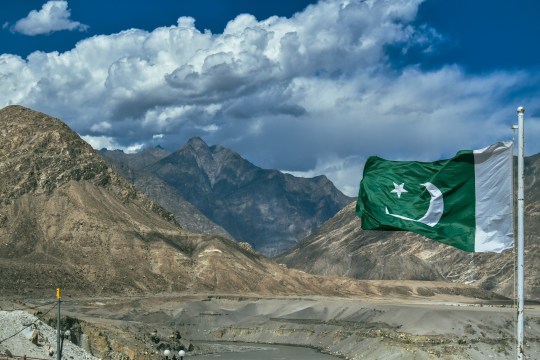
View On WordPress
0 notes
Text
Experience Unmatched Comfort with Haier Air Conditioners from Electrolux Pakistan
Key Features:
Efficient Cooling:
Haier air conditioners are renowned for exceptional cooling performance.
Suitable for both intense summers and everyday cooling needs.
Dedicated After-Sale Support:
Electrolux Pakistan prioritizes customer satisfaction with top-notch after-sale support.
Responsive team ready to address any queries or concerns related to your Haier air conditioner.
Seamless Services:
From online exploration to delivery and installation, Electrolux Pakistan ensures a hassle-free experience.
Emphasis on service excellence for a positive and smooth customer journey.
Competitive Pricing:
Enjoy Haier's premium cooling solutions at competitive prices.
Affordable rates often surpassing market alternatives, making quality accessible to all.
Convenient Online Store:
User-friendly online platform for easy browsing and informed decision-making.
Explore the diverse range of Haier air conditioners from the comfort of your home.
Customer Care Focus:
Dedicated customer care service committed to prompt issue resolution.
Ensuring a reliable and supportive experience for customers.
Trusted Brand Recognition:
Haier is an internationally recognized brand known for innovative and reliable appliances.
Opt for a Haier air conditioner, backed by a trusted brand with a strong reputation for quality.
Warranty Assurance:
Electrolux Pakistan provides warranty assurance on Haier air conditioners for customer peace of mind.
Comprehensive coverage in case of any unexpected issues.
Highlighted Models:
Haier AC 18 HJUV Inverter:
1.5-ton capacity with self-cleaning, Wi-Fi control, and UV air purification.
Efficient cooling and heating performance for a comfortable living space.
Haier AC 24-LTC/CFCM Fixed Speed:
2-ton fixed-speed AC designed for quick and effective cooling.
Ideal for larger spaces, offering comfortable sleep, robust airflow, and super cooling.
Haier AC 12 CFCM Fixed Speed:
1-ton fixed-speed AC with 100 percent copper pipes and super cooling.
Stylish white color and wall-mount design for an elegant touch.
Haier AC 18 CFCM/CFCP Fixed Speed:
1.5-ton fixed-speed AC featuring 100 percent copper pipes and super cooling.
White/gray color combination and self-cleaning feature for enhanced appeal.
Haier AC 24 HDZ/012 DC Inverter:
2-ton DC inverter AC known for quiet operation and vertical airflow.
Includes self-cleaning technology and adds a sleek, modern touch with its white color.
Electrolux Pakistan - Your Reliable Partner:
Committed to quality, affordability, and excellent service.
Elevate your comfort with Haier ACs from Electrolux Pakistan.
Explore the range at https://Electroluxpk.com for a smart choice in creating a cooler, more comfortable living space.
1 note
·
View note
Text
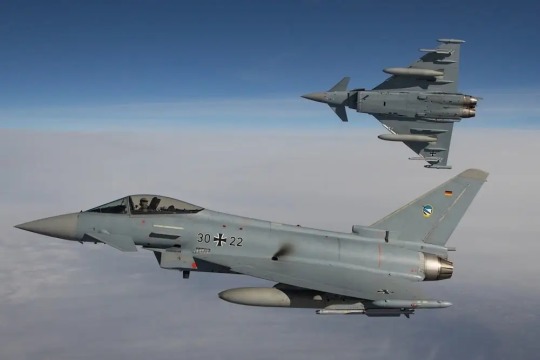
Eurofighters from Germany start QRA tasks in Slovakia
Fernando Valduga By Fernando Valduga 09/05/2023 - 11:00am Military
The Eurofighters of the 74 Squadron of the Neuburg an der Donau Tactical Air Force will protect the airspace over Slovakia from September to December 2023. (Photo: Bundeswehr)
To shorten the time until the entry into service of the new F-16 Block 70/72 for Slovakia, which delivered its MiG-29 fighters to Ukraine, the German Air Force (Luftwaffe) will be on alert in the Eastern European country until December 22 of this year.
As part of the assistance to the NATO alliance, the German Air Force took over air policing in Slovakia's airspace on September 2, 2023.
The associated tasks are carried out by the QRA (Rapid Reaction Alert) group of Squadron 74 of the Neuburg an der Donau Tactical Air Force. The Eurofighters of Neuburg will not only fly over Slovakia during real alerts, but will also carry out training flights in Slovak airspace and land on Slovak airfields.

Brigadier General Frank Gräfe, Head of Department 2 of the German Air Force Command, is responsible for the strategic and operational deployment planning within the Luftwaffe. He said: "The Eurofighter flights of the Neuburg Squadron in Slovakia are another visible contribution to the alliance, in addition to the security of airspace by the Patriot squadrons in Zamosc, Poland, and regular air policing missions in the Baltic States."
After delivering its last MiG-29 to Ukraine, the Slovak Air Force no longer has its own combat aircraft. They ordered 14 F-16 Block 70/72 fighters from Lockheed Martin in December 2018. The first four F-16s for Slovakia were supposed to be delivered last year. Slovak pilots are being trained in this type with the Arizona National Air Guard at Tucson Air Base.
Tags: Military AviationEurofighter TyphoonLuftwaffe - German Air ForceNATO - Air Policing MissionNATO - QRA (Quick Reaction Alert)
Sharing
tweet
Fernando Valduga
Fernando Valduga
Aviation photographer and pilot since 1992, he has participated in several events and air operations, such as Cruzex, AirVenture, Daytona Airshow and FIDAE. He has work published in specialized aviation magazines in Brazil and abroad. Uses Canon equipment during his photographic work throughout the world of aviation.
Related news
MILITARY
Myanmar Committee sends severe message to Pakistan about unusable JF-17 Thunder fighters
06/09/2023 - 12:00
HELICOPTERS
Nigeria will receive 18 attack helicopters from Turkey and the US
09/06/2023 - 08:53
BRAZILIAN AIR FORCE
IMAGES: Open Gates 2023 at Brasilia Air Base gathers 80,000 people
06/09/2023 - 08:18
MILITARY
Is the influence of the West diminishing in South America?
05/09/2023 - 23:18
MILITARY
IMAGES: Australian and Thai fighters participate in joint air combat exercise
05/09/2023 - 16:00
ARMAMENTS
Japan will increase long-range attack capability with JASSM-ER cruise missile
05/09/2023 - 14:00
homeMain PageEditorialsINFORMATIONeventsCooperateSpecialitiesadvertiseabout
Cavok Brazil - Digital Tchê Web Creation
Commercial
Executive
Helicopters
HISTORY
Military
Brazilian Air Force
Space
Specialities
Cavok Brazil - Digital Tchê Web Creation
5 notes
·
View notes
Text
Events 4.20 (after 1920)
1922 – The Soviet government creates South Ossetian Autonomous Oblast within Georgian SSR.
1945 – World War II: U.S. troops capture Leipzig, Germany, only to later cede the city to the Soviet Union.
1945 – World War II: Führerbunker: On his 56th birthday Adolf Hitler makes his last trip to the surface to award Iron Crosses to boy soldiers of the Hitler Youth.
1945 – Twenty Jewish children used in medical experiments at Neuengamme are killed in the basement of the Bullenhuser Damm school.
1946 – The League of Nations officially dissolves, giving most of its power to the United Nations.
1961 – Cold War: Failure of the Bay of Pigs Invasion of US-backed Cuban exiles against Cuba.
1968 – English politician Enoch Powell makes his controversial "Rivers of Blood" speech.
1968 – South African Airways Flight 228 crashes near the Hosea Kutako International Airport in South West Africa (now Namibia), killing 123 people.
1972 – Apollo program: Apollo 16 Lunar Module, commanded by John Young and piloted by Charles Duke, lands on the Moon.
1998 – Air France Flight 422 crashes after taking off from El Dorado International Airport in Bogotá, Colombia, killing all 53 people on board.
1999 – Columbine High School massacre: Eric Harris and Dylan Klebold kill 13 people and injure 24 others before committing suicide at Columbine High School in Columbine, Colorado.
2007 – Johnson Space Center shooting: William Phillips barricades himself with a handgun in NASA's Johnson Space Center in Houston, Texas before killing a male hostage and himself.
2008 – Danica Patrick wins the Indy Japan 300 becoming the first female driver in history to win an Indy car race.
2010 – The Deepwater Horizon drilling rig explodes in the Gulf of Mexico, killing eleven workers and beginning an oil spill that would last six months.
2012 – One hundred twenty-seven people are killed when a plane crashes in a residential area near the Benazir Bhutto International Airport near Islamabad, Pakistan.
2013 – A 6.6-magnitude earthquake strikes Lushan County, Ya'an, in China's Sichuan province, killing more than 150 people and injuring thousands.
2015 – Ten people are killed in a bomb attack on a convoy carrying food supplies to a United Nations compound in Garowe in the Somali region of Puntland.
2020 – For the first time in history, oil prices drop below zero, an effect of the 2020 Russia-Saudi Arabia oil price war.
2021 – State of Minnesota v. Derek Michael Chauvin: Derek Chauvin is found guilty of all charges in the murder of George Floyd by the Fourth Judicial District Court of Minnesota.
2023 – SpaceX's Starship rocket, the largest and most powerful rocket ever built, launches for the first time. It explodes 4 minutes into flight.
0 notes
Text
India's Military Renaissance: Rapid Modernization Amidst Regional Tensions A Sign of War Preparation?
India's Military Renaissance: Rapid Modernization Amidst Regional Tensions A Sign of War Preparation? #India #China #Pakistan #Military #Modernization #War #Security #IndiaDefense #GeopoliticalShifts #IndigenousWeapons #SecurityUpdate #GlobalDeterrence
India’s Rapid Military Modernization: A Sign of War Preparation?
India is undergoing a massive military modernization program, with a focus on developing indigenous arms and weapon systems. The country has conducted at least half a dozen missile tests in the last week, showcasing its capabilities in various domains such as air, land, sea, and space. Some of the notable weapons that India has…

View On WordPress
#China#conflict#defense#Defense Capabilities#Deterrence Strategy#Geopolitics#India#India Military Modernization#Indigenous Weapons#Indo-China Relations#Indo-Pakistan Relations#military#Modernization#National Security#Pakistan#platforms#Security#War#weapons
0 notes